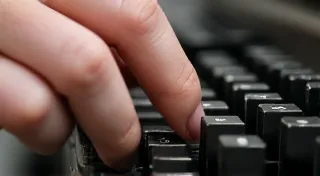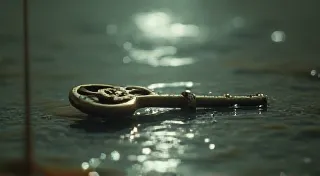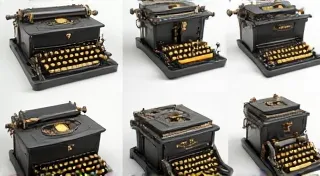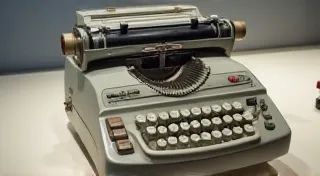Finding and Replacing Vintage Typewriter Parts
Restoring vintage typewriters is a rewarding hobby, but it often involves the inevitable need to replace worn or broken parts. Finding these parts can be a challenge, but with a little persistence and knowledge, you can keep your treasured machines ticking. The process can be complex, especially when dealing with issues like rust, which can significantly impact part condition and availability. Learning how to handle and prevent rust, as discussed in detail in Dealing with Rust on Vintage Typewriters: Prevention and Removal, is an essential first step for any typewriter restorer.
The Challenge of Sourcing Vintage Typewriter Parts
Unlike modern appliances, replacement parts for vintage typewriters aren’t readily available at big box stores. Many original manufacturers have long ceased operations, and even specialized parts suppliers often have limited inventories. This scarcity drives up prices and requires a more proactive approach to sourcing. The age of these machines often means parts are brittle, fragile, and prone to issues themselves – especially if they’re been exposed to moisture and the subsequent development of rust.
Where to Find Replacement Parts
Here's a breakdown of the most common avenues for finding replacement typewriter parts, ranked roughly from most accessible to more involved:
1. Online Vendors
Several online retailers specialize in vintage typewriter parts. While they might be pricier than other options, they offer convenience and a degree of certainty regarding part compatibility. Research vendor reputations carefully before making a purchase. It's often helpful to check vendor reviews, looking for mentions of part condition and accuracy of descriptions, particularly regarding rust or other damage.
2. Typewriter Repair Shops
Experienced typewriter repair shops often stock a range of common parts and might be able to source less common ones. Building a relationship with a local repair shop can be invaluable. They can also offer expert advice on compatibility and proper installation. These shops often have a wealth of knowledge and can advise you on preventative measures to avoid future issues, such as dealing with rust, a common foe of vintage machinery.

3. Typewriter Swap Meets and Shows
Typewriter swap meets and shows are treasure troves for vintage typewriter enthusiasts. These events bring together collectors, dealers, and repair shops, offering a wide selection of parts, machines, and knowledge. Be prepared to haggle and thoroughly inspect any parts before purchasing. Be especially vigilant for signs of rust or other degradation that may not be immediately apparent. Knowing how to properly clean and treat these parts can extend their lifespan considerably.
4. Online Auctions & Classifieds
Platforms like eBay and specialized typewriter forums often have listings for individual parts. Careful searching and diligent inspection of photos are crucial. Always check the seller's feedback and be wary of descriptions that are vague or incomplete. When examining photos, pay close attention to any signs of corrosion or rust that might impact the part’s functionality or necessitate additional restoration work. Remember that a seemingly small amount of rust can be a significant indicator of underlying issues.
5. Salvaging from Broken Machines
This is arguably the most cost-effective option, but requires a bit more effort and mechanical aptitude. Sourcing broken or non-working typewriters allows you to dismantle them and harvest usable parts. Remember to research the specific typewriter model before attempting this, and always prioritize safety when handling potentially damaged machinery. When salvaging parts, understand that they may already be compromised by rust, corrosion, or other forms of degradation. A thorough cleaning and rust removal process may be necessary before the parts can be safely used.
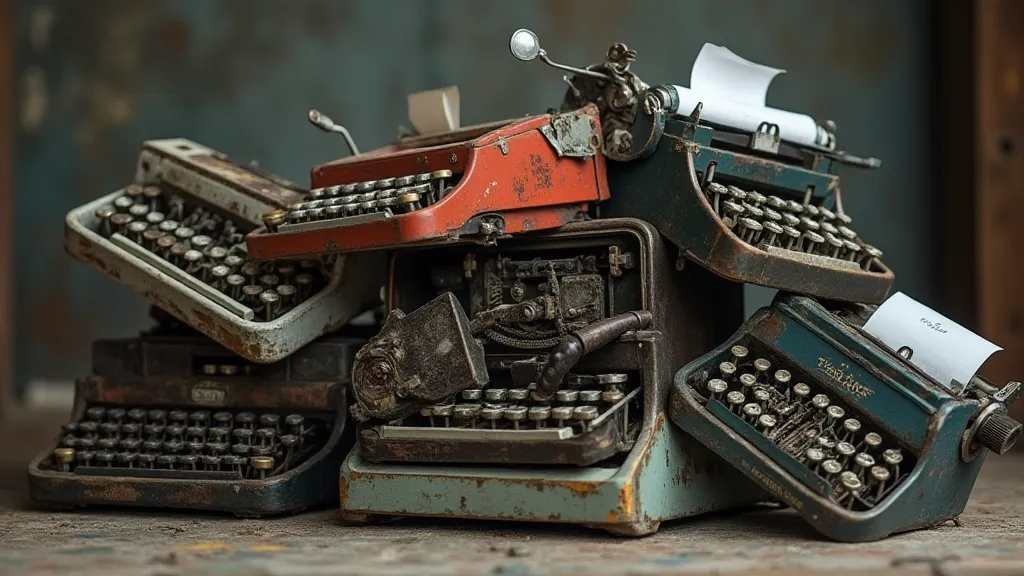
Understanding Part Compatibility
Vintage typewriters come in a vast array of brands and models. Not all parts are universally interchangeable. It’s crucial to:
- Identify the specific typewriter model: This is the most important step. Look for a model number stamped on the machine.
- Research part numbers: Original parts often have unique part numbers. Consult repair manuals, online forums, or experienced restorers to identify the correct number for your machine.
- Compare dimensions and features: If a part number is unavailable, carefully compare the dimensions and features of the replacement part to the original.
- Ask for expert advice: When in doubt, seek guidance from a typewriter repair shop or experienced restorer. These experts can often spot subtle differences in design or manufacturing that can impact compatibility.
- Consider Rust and its Impact: When dealing with salvaged parts, factor in the possibility that rust may have altered the dimensions or features of the component.
Commonly Replaced Parts
While the specific parts needed will vary depending on the typewriter model and condition, here are some of the most commonly replaced components:
- Type Bars: These are the primary printing elements and are prone to wear and breakage. Rust can be a significant problem for type bars, causing them to seize or corrode.
- Platens: The rubber roller against which the type bars strike. These can harden and crack over time, often exacerbated by exposure to moisture which can accelerate degradation.
- Ribbons and Ribbon Spools: Regular replacement is essential for print quality. Proper storage and handling can help prevent ribbon deterioration.
- Keys and Keycaps: Can become worn, cracked, or lost. Rust can also affect the springs and mechanisms underneath the keycaps.
- Springs: A source of frequent issues as they can fatigue. Corrosion can render springs brittle and prone to breakage.
- Carriage Rails: These guide the carriage across the platen and are vulnerable to rust, requiring lubrication and occasional cleaning.
- Escapement Mechanisms: These intricate parts control the timing of the printing process and can suffer from rust and wear.
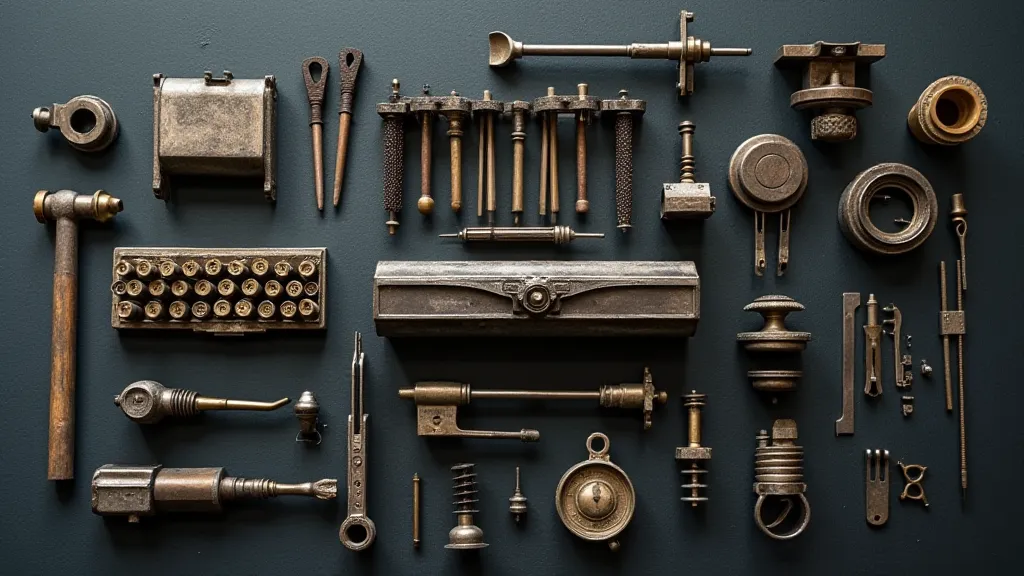
Advanced Restoration Techniques & Rust Removal
Beyond simple part replacement, certain restoration tasks may be required. Dealing with rust, for example, can be a complex process. Depending on the severity, methods can range from careful cleaning with specialized solutions to more involved techniques like electrolysis. It’s important to choose the appropriate method based on the type of metal and the extent of the corrosion. Aggressive rust removal techniques can damage the original finish and delicate components. For critical parts, it might be preferable to seek the expertise of a professional typewriter restorer.
Preserving Your Restored Typewriter
Once you’re finished restoring your vintage typewriter, proper care and maintenance are crucial to prevent future problems. Regular cleaning, lubrication, and storage in a dry environment will help preserve its condition. Consider using a desiccant to absorb moisture in the storage area. Following the advice detailed in Dealing with Rust on Vintage Typewriters: Prevention and Removal will ensure that your beautiful machine continues to function flawlessly for years to come.
Conclusion
Finding replacement parts for vintage typewriters requires patience, research, and a willingness to explore different avenues. By understanding the challenges and utilizing the resources available, you can keep your cherished machines in working order and preserve a piece of history. Remember that proper maintenance and preventative measures, particularly addressing potential rust issues, are just as important as finding replacement parts.
